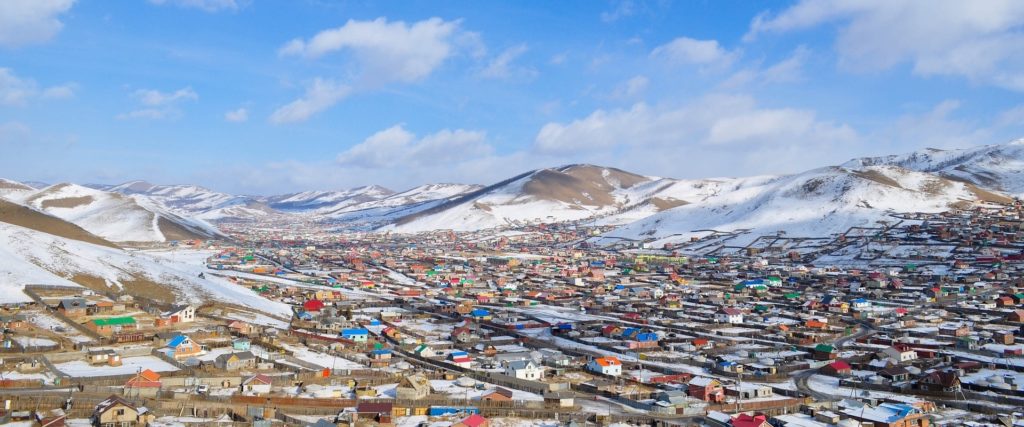Mongolia’s winters have aways been frigid and harsh. But in recent decades, the extreme cold has become punishingly frequent. These brutal winter freezes kill sheep and cattle by the millions. So thousands of rural families have lost their livestock and their livelihoods, forcing them to abandon their traditional lifestyle and move to the capital city of Ulaanbataar. Twenty percent of the population has relocated to the capital over the past thirty years.
The population shift has created significant social and environmental challenges for Ulaanbataar. The city is surrounded by 180,000 yurts (also called gers), homes to the city’s newcomers. Desperate to survive in the freezing winters, these Ger-area households burn coal and trash to stay warm and cook meals. UN Environment estimates that more than 2/3 of Ulaanbaatar’s pollution is caused by stoves in Gers. Other sources of pollution include coal-fueled power plants and coal-burning businesses, as well as private vehicles.
The pollution has reached crisis levels. Ulaanbaatar’s air pollution is five times worse than Beijing’s. In December 2016, the levels of PM2.5 pollution reached 1,985 micrograms per cubic meter — nearly 80 times the level WHO recommends as safe. The annual average PM2.5 in Ulaanbaatar is 7.5 times greater than WHO guideline levels.
This poor air quality kills. According to 2012 data, about 3,700 people in Mongolia die each year from the effects of air pollution. Pneumonia related to air pollution is responsible for 15 percent of deaths in young children.

An ambitious plan to tackle air pollution
The national government of Mongolia is facing the challenges head on. The National Action Plan for Reducing Air and Environmental Pollution (2017) was recently approved by the Cabinet. The plan includes 59 measures to achieve cleaner air, including limiting usage of raw coal for fuel in Ger homes and improving public transportation.
The National Action Plan for Reducing Air and Environmental Pollution follows a National Green Development Policy (2014) and an Action Plan for Implementation (2016).
In 2013, Mongolia joined the Partnership for Action on Green Economy (PAGE). Through this partnership, Mongolia is turning a page and setting a new standard for sustainable economic and urban development.
As a new member of the BreatheLife network, Mongolia continues to show its commitment to sustainable development and a healthy future.
Key campaign goals include:
Ban all use of unprocessed coal by businesses and Ger homes by 2021
Improve public transportation
Improve vehicle and fuel emission standards
Reduce GHG emissions by 14 percent under the Paris Agreement
Implement new policies for solid waste management
Learn more about Mongolia’s air quality.
Mongolia’s Green Development Policy Targets in collaboration with PAGE include:
30% share of renewable energy in total power supply
40% share of recycled waste
30% share of green space
40% energy efficiency in buildings
Learn more about Mongolia and the Partnership for Action on Green Economy (PAGE).